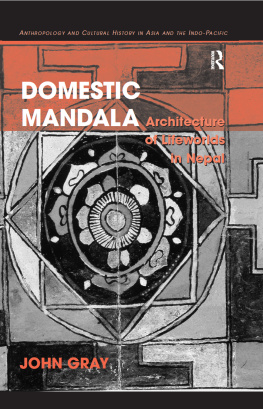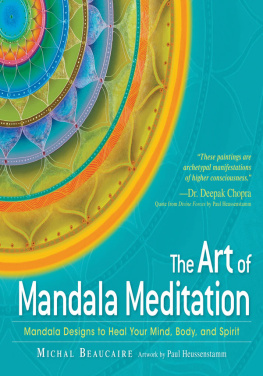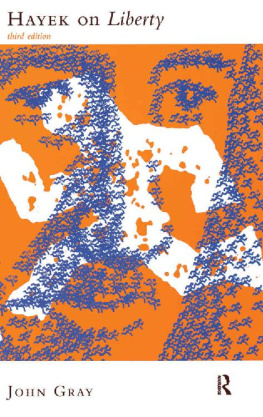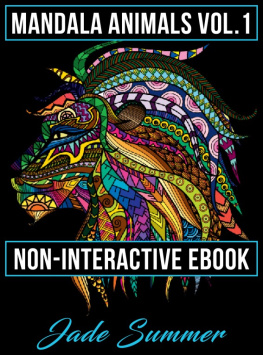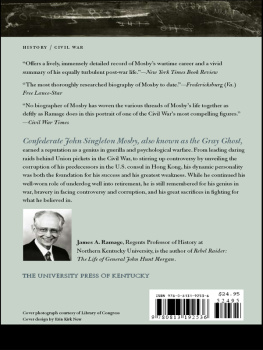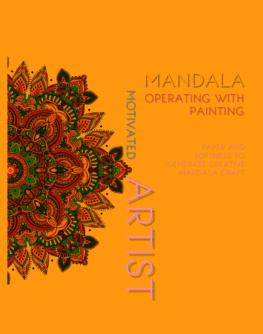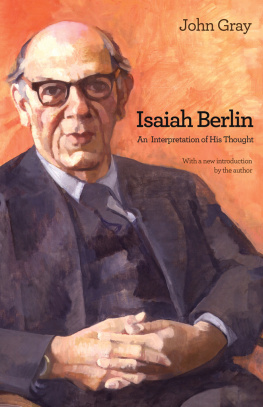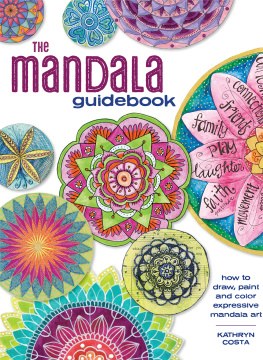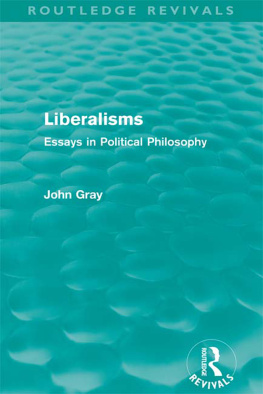Gray John - Domestic Mandala
Here you can read online Gray John - Domestic Mandala full text of the book (entire story) in english for free. Download pdf and epub, get meaning, cover and reviews about this ebook. publisher: Taylor & Francis Group, genre: Religion. Description of the work, (preface) as well as reviews are available. Best literature library LitArk.com created for fans of good reading and offers a wide selection of genres:
Romance novel
Science fiction
Adventure
Detective
Science
History
Home and family
Prose
Art
Politics
Computer
Non-fiction
Religion
Business
Children
Humor
Choose a favorite category and find really read worthwhile books. Enjoy immersion in the world of imagination, feel the emotions of the characters or learn something new for yourself, make an fascinating discovery.
- Book:Domestic Mandala
- Author:
- Publisher:Taylor & Francis Group
- Genre:
- Rating:4 / 5
- Favourites:Add to favourites
- Your mark:
- 80
- 1
- 2
- 3
- 4
- 5
Domestic Mandala: summary, description and annotation
We offer to read an annotation, description, summary or preface (depends on what the author of the book "Domestic Mandala" wrote himself). If you haven't found the necessary information about the book — write in the comments, we will try to find it.
Gray John: author's other books
Who wrote Domestic Mandala? Find out the surname, the name of the author of the book and a list of all author's works by series.
Domestic Mandala — read online for free the complete book (whole text) full work
Below is the text of the book, divided by pages. System saving the place of the last page read, allows you to conveniently read the book "Domestic Mandala" online for free, without having to search again every time where you left off. Put a bookmark, and you can go to the page where you finished reading at any time.
Font size:
Interval:
Bookmark:

DOMESTIC MANDALA
Anthropology and Cultural History in Asia and the Indo-Pacific
Series Editors:
Pamela J. Stewart and Andrew Strathern
University of Pittsburgh, USA
This series offers a fresh perspective on Asian and Indo-Pacific Anthropology. Acknowledging the increasing impact of transnational flows of ideas and practices across borders, the series widens the established geographical remit of Asian studies to consider the entire Indo-Pacific region. In addition to focussed ethnographic studies, the series incorporates thematic work on issues of cross-regional impact, including globalization, the spread of terrorism, and alternative medical practices.
The series further aims to be innovative in its disciplinary breadth, linking anthropological theory with studies in cultural history and religious studies, thus reflecting the current creative interactions between anthropology and historical scholarship that are enriching the study of Asia and the Indo-Pacific region. While the series covers classic themes within the anthropology of the region such as ritual, political and economic issues will also be tackled. Studies of adaptation, change and conflict in small-scale situations enmeshed in wider currents of change will have a significant place in this range of foci.
We publish scholarly texts, both single-authored and collaborative as well as collections of thematically organized essays. The series aims to reach a core audience of anthropologists and Asian Studies specialists, but also to be accessible to a broader multidisciplinary readership.
Titles in the series
Aboriginal Art, Identity and Appropriation
Elizabeth Burns Coleman
ISBN 0 7546 4403 0
The Making of Global and Local Modernities in Melanesia
Humiliation, Transformation and the Nature of Cultural Change
Edited by
Joel Robbins and Holly Wardlow
ISBN 0 7546 4312 3
Of Marriage, Violence and Sorcery
The Quest for Power in Northern Queensland
David McKnight
ISBN 0 7546 4465 0
Domestic Mandala
Architecture of Lifeworlds in Nepal
JOHN GRAY
University of Adelaide, Australia

First published 2006 by Ashgate Publishing
Published 2016 by Routledge
2 Park Square, Milton Park, Abingdon, Oxon OX14 4RN
711 Third Avenue, New York, NY 10017, USA
Routledge is an imprint of the Taylor & Francis Group, an informa business
Copyright c 2006 John Gray
John Gray has asserted his right under the Copyright, Designs and Patents Act, 1988, to be identified as the author of this work.
All rights reserved. No part of this book may be reprinted or reproduced or utilised in any form or by any electronic, mechanical, or other means, now known or hereafter invented, including photocopying and recording, or in any information storage or retrieval s ystem, without permission in writing from the publishers.
Notice:
Product or corporate names may be trademarks or registered trademarks, and are used only for identification and explanation without intent to infringe.
British Library Cataloguing in Publication Data
Gray, John N., 1945
Domestic mandala : architecture of lifeworlds in Nepal. -(Anthropology and cultural history in Asia and the Indo-Pacific)
1. Sacred space - Social aspects - Nepal 2. Symbolism in architecture - Nepal 3. Dwellings - Nepal - Religious aspects - Hindu 4, Architecture. Domestic - Nepal 5. Architecture and religion 6. Mandala - Social aspects - Nepal 7. Yantras
I. Title
306.6'945'095496
Library of Congress Cataloging-in-Publication Data
Gray, John N., 1945
Domestic mandala : architecture of lifeworlds in Nepal / by John Gray.
p. cm. -- (Anthropology and cultural history in Asia and the Indo-Pacific)
Includes bibliographical references and index.
ISBN 0-7546-4538-X
1. Chhetris--Dwellings--Nepal--Kholagaun. 2. Chhetris-Nepal-Kholagaun-Social life and customs. 3. Mandala--Nepal--Kholagaun. 4. Architecture and cosmology. 5. Hindu cosmology. 6 Hinduism--Nepal--Kholagaun--Rituals. I. Title. II. Series.
DS493.9.C49G73 2006
305.891'495--dc22
2006002767
Transfered to Digital Printing in 2012
ISBN 9780754645382 (hbk)
Contents
For Martin Frank
Permission to reproduce the following is gratefully acknowledged by the publisher:
: Chris Crothers, School of Social Sciences, University of Adelaide.
Cover illustration and , Sri Yantra, Ajit Mookherjee Collection. From Yantra: The Tantric Symbol of Cosmic Unity by Madhu Khanna, Thames and Hudson, London.
(left), Nairatma Mandala, Early Tibetan Mandalas: The Rossi Collection, Rossi & Rossi Ltd, London.
, Vastu purusha mandala, Vistasp Mehta, bT Square Peg Design Studio.
, Two spatial configurations of vastu purusha mandala. From Indian Architectural Theory: Contemporary Uses of Vastu Vidya, V. Chakrabarti, Oxford University Press, Delhi.
Andrew Strathern and Pamela J. Stewart
We are very happy to include John Grays excellent ethnographic exposition on Domestic Mandala: Architecture of Lifeworlds in Nepal in our series on Anthropology and Cultural History in Asia and the Indo-Pacific. Dr. Gray is a noted scholar whose work spans Lowland Scotland and the Highland reaches of the Kathmandu Valley in Nepal. This book also creates bridges between architecture and anthropology, since it is a sustained discussion of the cosmological significance of houses in Kholagaun hamlet in the village of Banaspati in Kathmandu. Specifically, Dr. Gray argues that the house is seen imaginatively as a mandala or mystic diagram that acts to bring the meanings of the sacred order or cosmos in peoples lives literally close to home. Unifying the analysis is the concept of homology and mystical connection between different domains of existence, seen as macrocosm and microcosm. In this way the house can be seen to be a part of and also to replicate the wider cosmos; while the human body itself may be seen as a further microcosmic version of a mandala. As Dr. Gray points out, these correspondences are not just a matter of abstract cognition. They are embodied and practical, guiding people in terms of rituals they need to perform in order to ensure their health and fertility. At the same time, people are enjoined by their cosmological notions not to become too attached to worldly concerns, so that they can see through the impediments of illusion and grasp the unity of the cosmos as something beyond themselves. It might seem a tall order for the architecture of houses to express all these levels and contradictions of cosmological thought, but Dr. Gray points out that architecture in general produces embodied meanings and creates meaningful space; or, as we might put it, meaningful places that encapsulate both practical concerns and cosmological values. In the case of Kholagaun, Dr. Gray argues that there are actually two spatial modalities at work in houses: a mandalic mode, which emphasizes concentric spaces around a center and leads people to understand the unity of the cosmos; and a yantric mode, which deals with cardinal directions and the ritual ways of achieving auspiciousness and success in the world. Both persons and houses are intersections of these two modes, and both are also related to the foundational myth of the cosmic being Purusha, from whose self-sacrificial body came everything in the world, and a kind of sacred geometry associated with the construction of circles and with central points.
Font size:
Interval:
Bookmark:
Similar books «Domestic Mandala»
Look at similar books to Domestic Mandala. We have selected literature similar in name and meaning in the hope of providing readers with more options to find new, interesting, not yet read works.
Discussion, reviews of the book Domestic Mandala and just readers' own opinions. Leave your comments, write what you think about the work, its meaning or the main characters. Specify what exactly you liked and what you didn't like, and why you think so.

